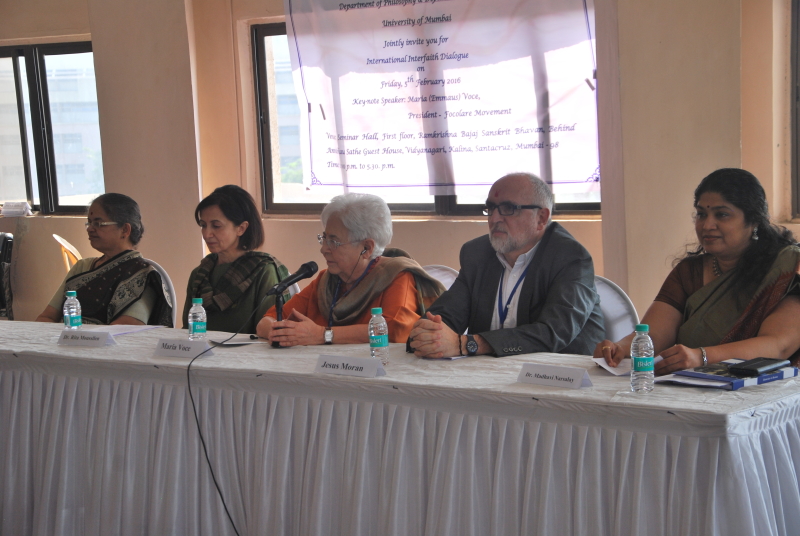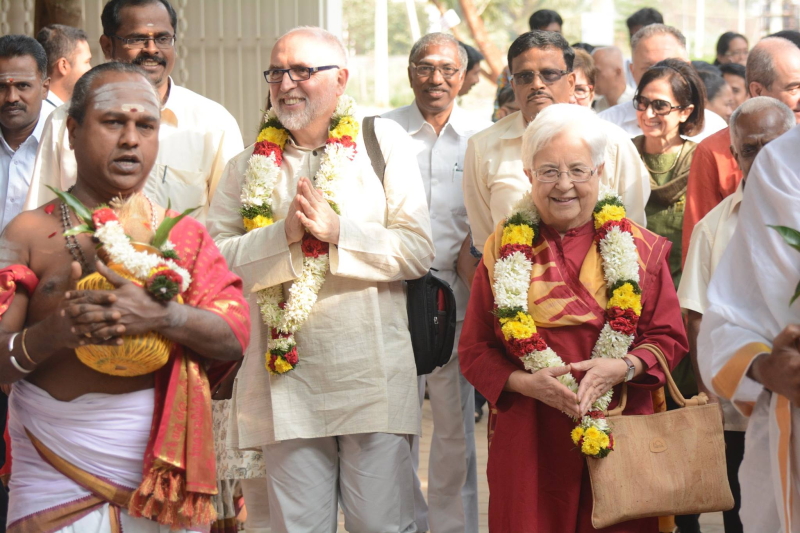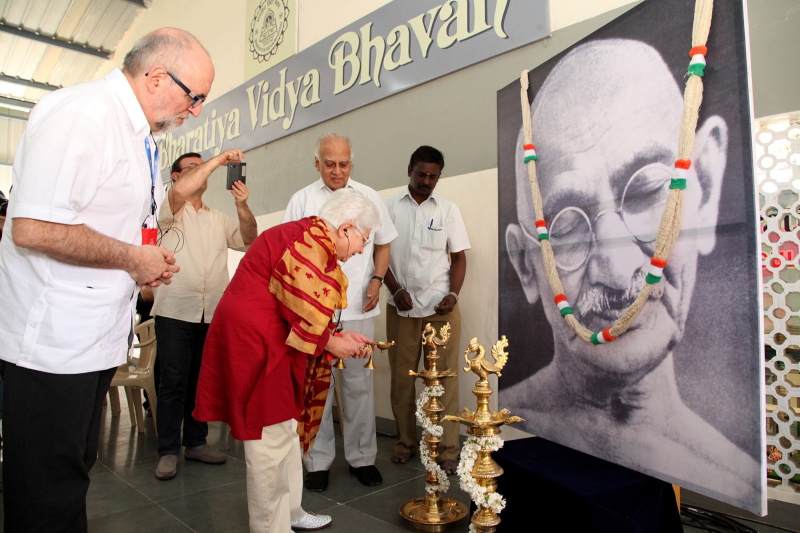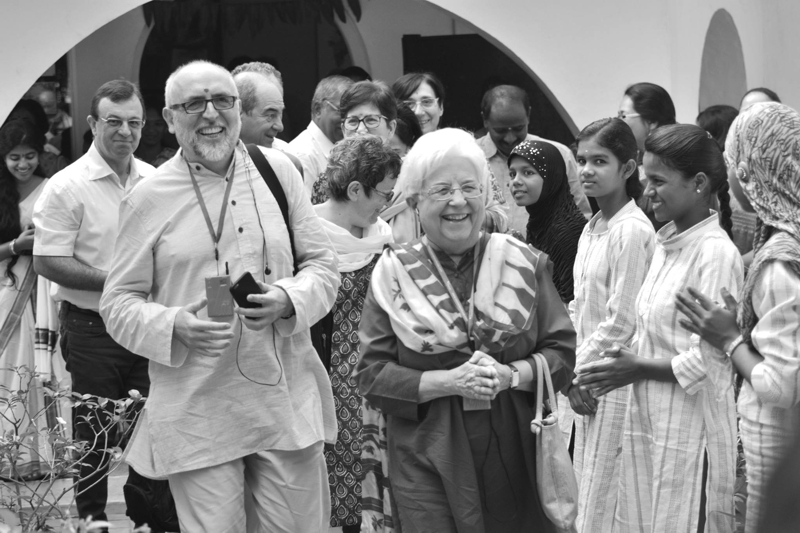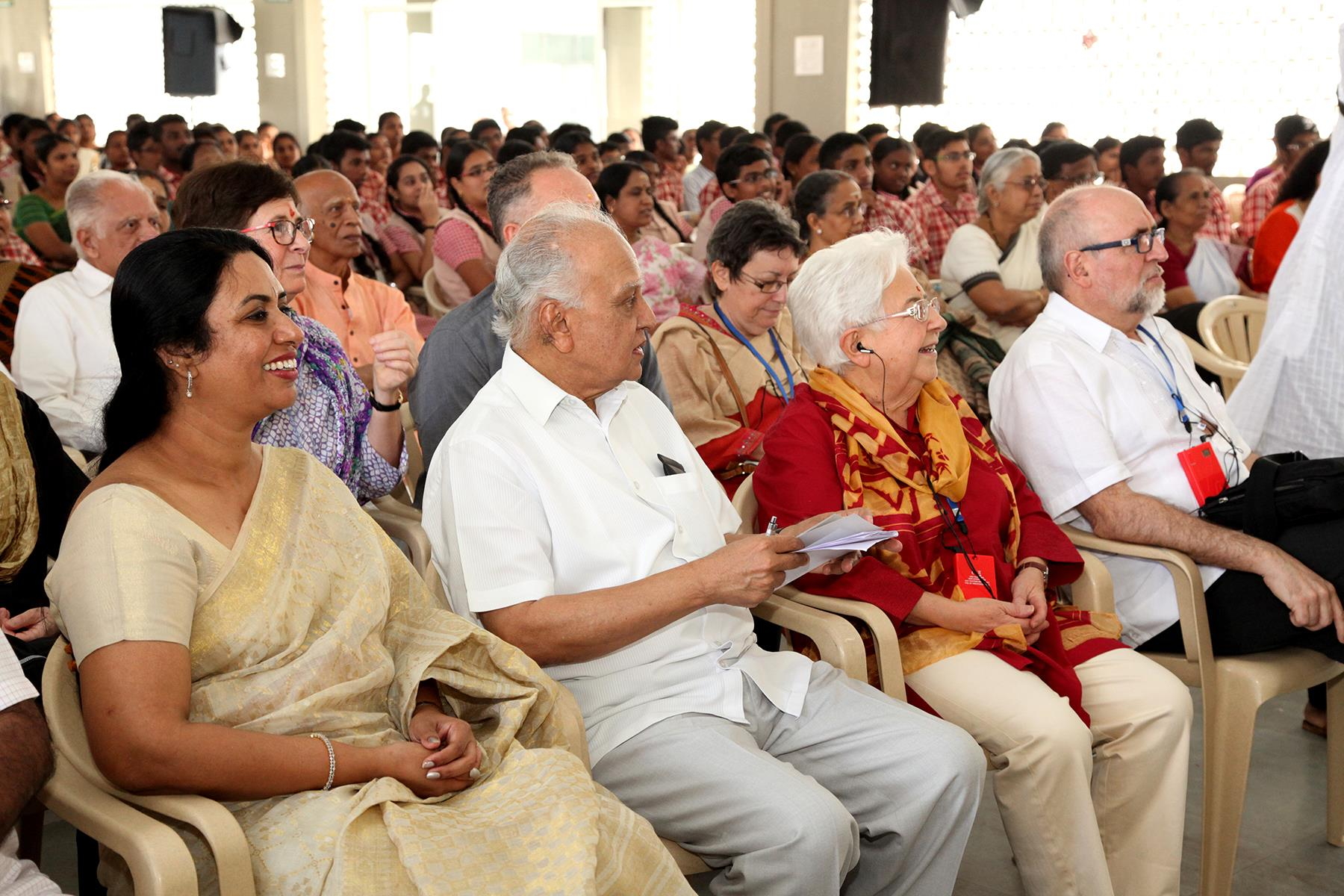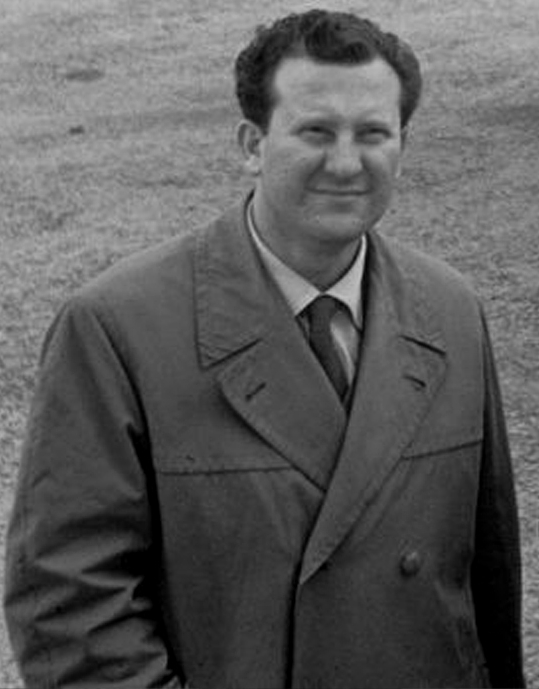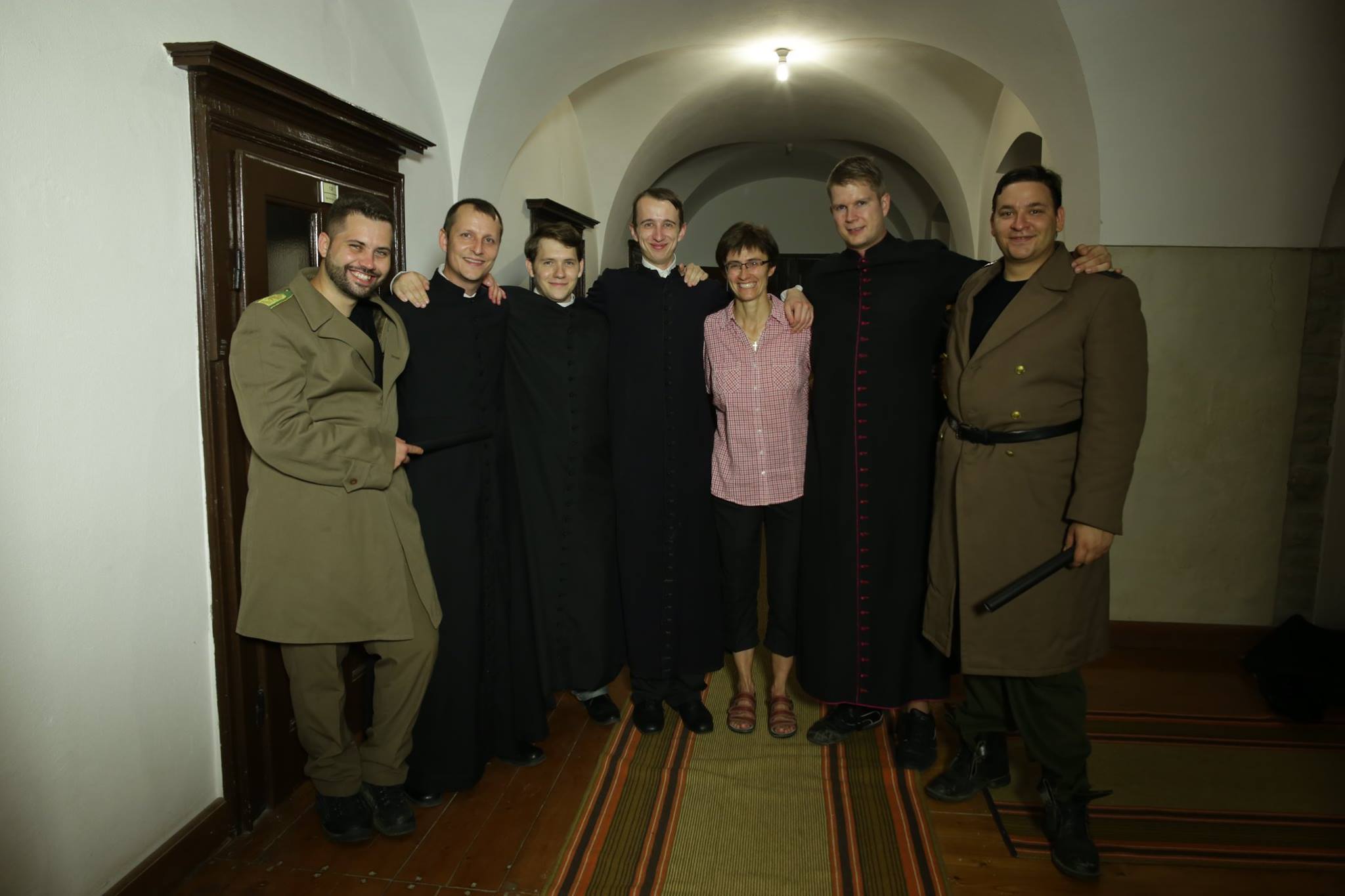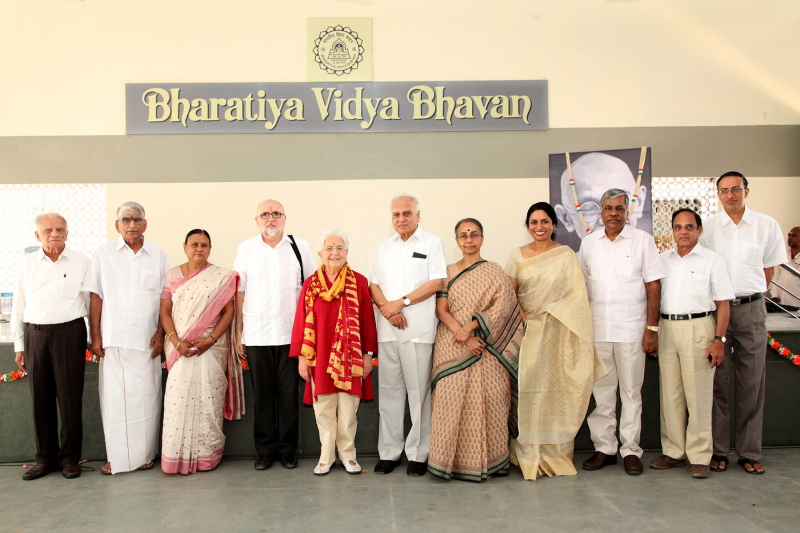

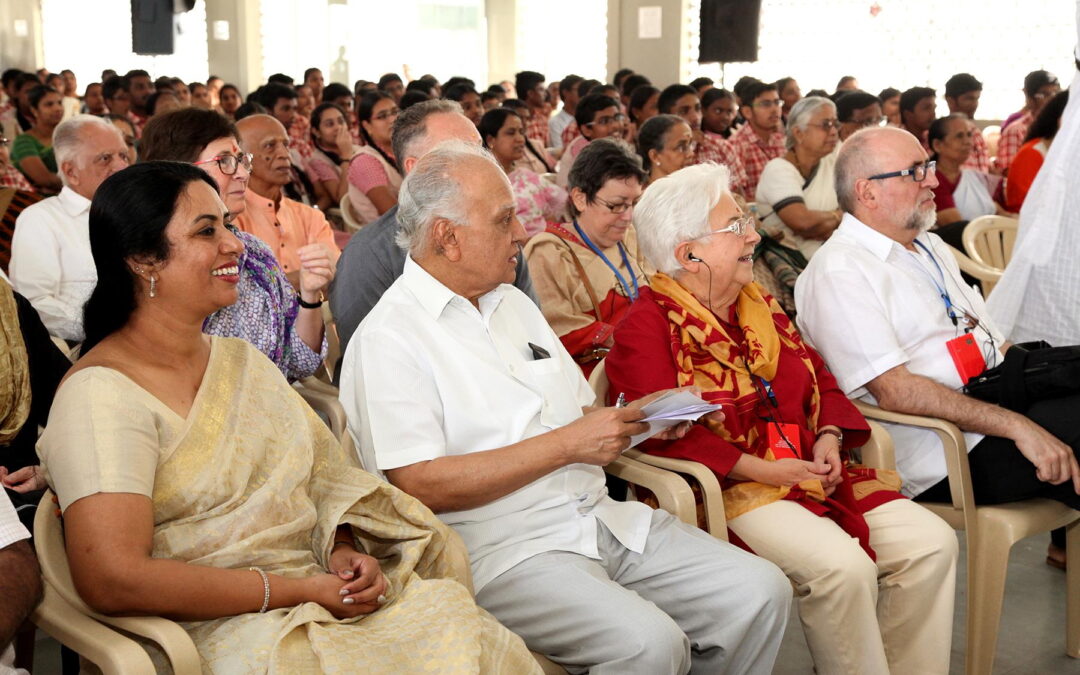
In India: Dialogue of Hearts and Minds
“I left expecting to encounter mystery. I return with the feeling of having encountered a far greater mystery than I had imagined.” “My impressions in these first hours . . . on one side, a greater desire for the Absolute and the inner life . . . on the other, a stronger liking for pluralism and less fear of diversity . . . finally the beautifulness of the people especially the young who are the future.” These were some of the first impressions shared by Maria Voce and Jesús Morán on a February 13th telephone link-up with Focolare members across the world, following their long visit to the Focolare communities in India. It was a complex, month-long visit with stops in New Delhi, Bangalore, Coimbatore, Trichy and Mumbai. Interreligious dialogue is a major feature of the sub-continent, and the Focolare has been engaged in this dialogue since it first arrived in the 1980s. The paths that were opened in 2001 and in 2003 during two visits by Chiara Lubich to Mumbai and Coimbatore have, over the course of the years, led to a growing relationship that was both academic, and Gandhian. Even though they had many common experiences such as symposiums in 2002 and 2004 in Italy, and 2011 in India, they developed their own unique characteristics that led to diversified types of dialogue that were all the while animated by the same spirit. The definition given by several Hindu friends to describe the dialogue between the Focolare and the Hindu world – as a dialogue of hearts and minds – remains true for all. In 2001 Chiara told a group of Hindus in Mumbai: “I’ve come to India, especially to listen, to learn from you, to possibly begin a cordial dialogue with you in whom I see many brothers and sisters.” When someone asked her what attitude was needed for dialogue, Chiara responded: “We focus on the so-called Golden Rule that is found in all religions, also Hinduism: ‘Do not do to another, what you would not want done to you.’” Another time, during that same period, in an interview with Vatican Radio: “Dialogue first of all means placing yourself on the same level, not having a priori notions, of being better than the others; opening yourself to hearing what the others have inside, putting everything aside in order to enter into their souls and then, naturally, asking them to listen to us. This process allows us to embrace our commonalities that are there – and then agreeing to live those together. That’s concrete dialogue.” In Delhi, during the first phase of the visit at the India International Centre, an intense and interesting meeting was held with the participation of people from different faiths and cultures. The moderators were Mr Merchant, a well-known representative of the Baha’i in the Indian capital, and by Dr Vinu Aram, director of Shanti Ashram in Coimbatore. The programme attempted to offer plural answers to the challenges that dialogue is called to face in today’s world. The afternoon event was titled: ‘The relevance of dialogue in today’s society’ and included a presentation of the experience of the Focolare Movement in the field of dialogue. Maria Voce and Jesús Morán discussed the tension between progress towards unity and the tendency to defend and characterise respective identities, which is major feature of the times we are living in. The charismatic experience of dialogue proposed by Chiara Lubich that has opened original and articulated paths of dialogue is situated precisely in this tension that is typical of the globalisation process and, at the same time, is seeing the world rapidly changing because of the influx of immigrants and regional conflicts, Maria Voce remarked on the Golden Rule that is found in every culture and religion as a point of encounter which enables us to actualise what Chiara loved to call the Art of Loving, an authentic method of dialogue. Jesús Morán presented an anthropological aspect of dialogue describing several characteristics that reveal surprising consonance precisely in the experience between Hindus and Christians in recent years. During the course of the afternoon there were also other presentations concerning quite timely and deeply spiritual topics. Among these, Prof Satyavrat Shastri, a famous expert on Sanscript, Prof Uma Vaidya and Prof Shashi Prabhakumar who highlighted the analogies between traditional Hindu scriptures – especially the Veda Upanishad – and the dialogical charism of Chiara Lubich. Loppiano (Florence), 7th February 2001: https://vimeo.com/155508846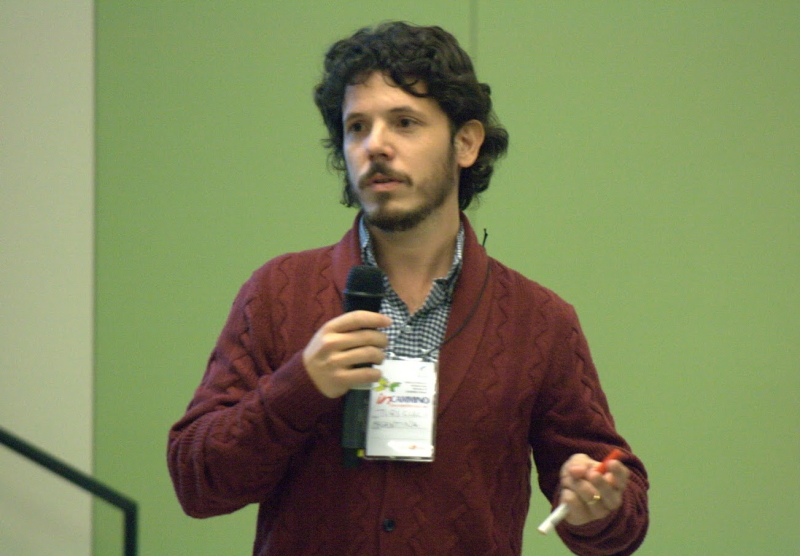
Training ourselves to train others
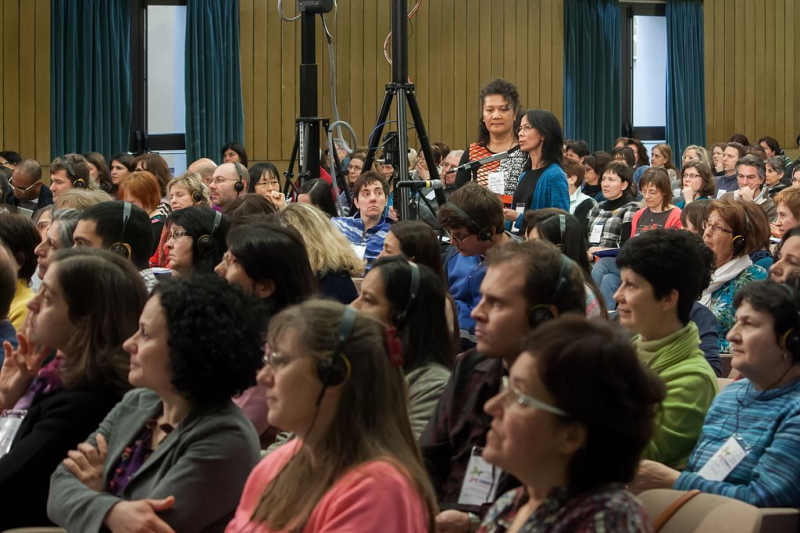 There was overwhelming agreement amongst the 400 youth workers who attended the conference, that they had chosen their profession because of love and not because of the career. Some of the topics discussed included: accompanying adolescents; role of the teacher; educating to do what is difficult; the community as educator. Vince and Make are from Melbourne, Australia. “I’m originally from Futuna – one more step and you fall off the globe!” Make joked. “When I went to visit a small community on the Island of Kiribati, the children were surprised by the presence of a stranger, and then suprised by the fact that I played games with them. I ran for two hours even though I’m no longer the right age that. We didn’t speak the same language, but a special relationship was created between us.
There was overwhelming agreement amongst the 400 youth workers who attended the conference, that they had chosen their profession because of love and not because of the career. Some of the topics discussed included: accompanying adolescents; role of the teacher; educating to do what is difficult; the community as educator. Vince and Make are from Melbourne, Australia. “I’m originally from Futuna – one more step and you fall off the globe!” Make joked. “When I went to visit a small community on the Island of Kiribati, the children were surprised by the presence of a stranger, and then suprised by the fact that I played games with them. I ran for two hours even though I’m no longer the right age that. We didn’t speak the same language, but a special relationship was created between us. 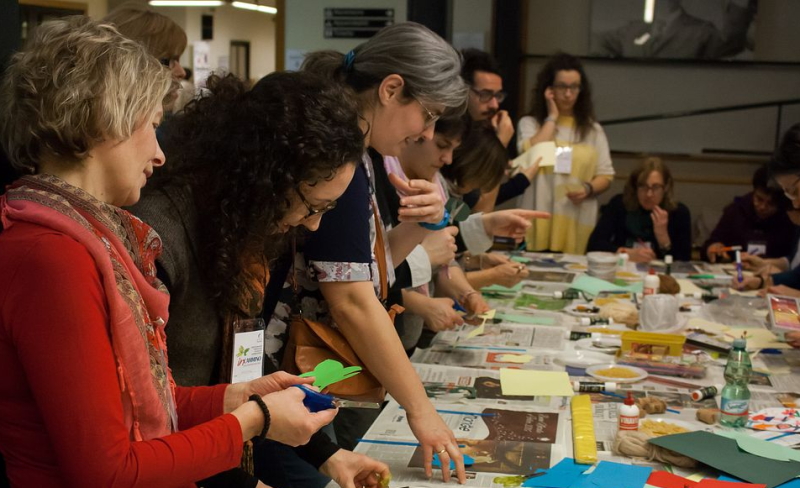 What is their educational model? They call it a person-relationship model in which one is able to love and be loved. It is rooted in the thought of Chiara Lubich. Her influence on the field of education is being developed by a group of researchers in the area of pedagogy and by the Abba School and the Sophia University Institute whose graduates were among the presenters. There were ample offerings for every age group, covering topics such as global education; types of group animators; group dynamics; conflict resolution; investigations on faith and reason; lifestyle and the environment; gender; addiction and mass media. Several interactive activities explored expressing emotions through dance; theatre; puppetting; shaping balloons; arts and crafts; video-making; photography and using shapes and images.
What is their educational model? They call it a person-relationship model in which one is able to love and be loved. It is rooted in the thought of Chiara Lubich. Her influence on the field of education is being developed by a group of researchers in the area of pedagogy and by the Abba School and the Sophia University Institute whose graduates were among the presenters. There were ample offerings for every age group, covering topics such as global education; types of group animators; group dynamics; conflict resolution; investigations on faith and reason; lifestyle and the environment; gender; addiction and mass media. Several interactive activities explored expressing emotions through dance; theatre; puppetting; shaping balloons; arts and crafts; video-making; photography and using shapes and images. 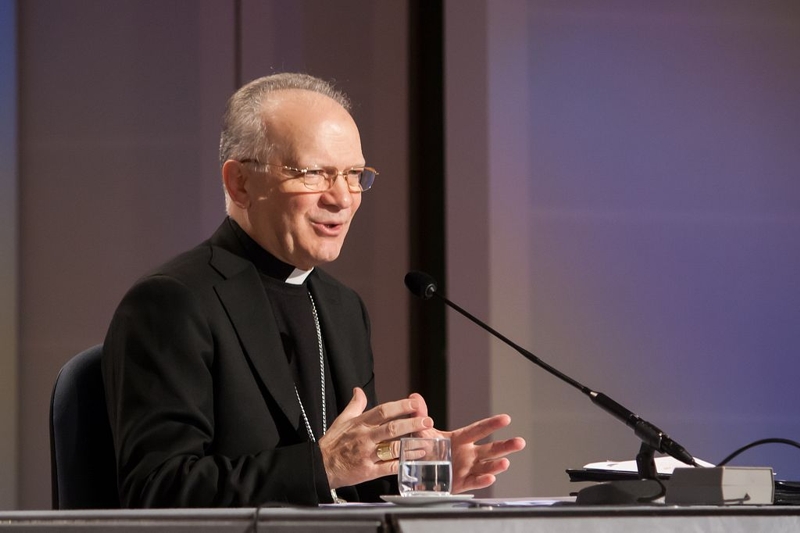 It was all a concrete opportunity to “put head, heart and hands to work,” to experience it and then live it along with the children. This educational method is particularly dear to the heart of Pope Francis (see World Congress on Education, Rome, Italy, November 2015). During his presentation, Msgr Vincenzo Zani, Secretary of the Congregation for Catholic Education offered Pope Francis’s vision for education to all the formators at Castel Gandolfo from February 5-10, 2015.
It was all a concrete opportunity to “put head, heart and hands to work,” to experience it and then live it along with the children. This educational method is particularly dear to the heart of Pope Francis (see World Congress on Education, Rome, Italy, November 2015). During his presentation, Msgr Vincenzo Zani, Secretary of the Congregation for Catholic Education offered Pope Francis’s vision for education to all the formators at Castel Gandolfo from February 5-10, 2015. 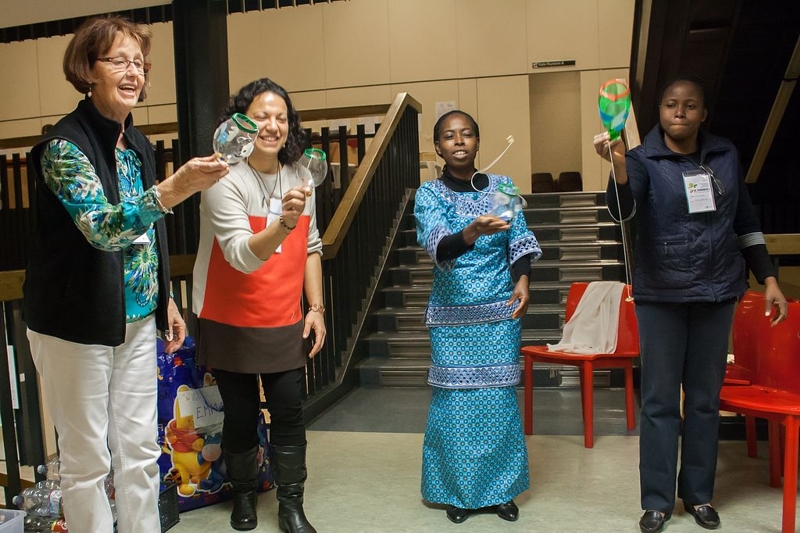 Today’s educators must be master risk-takers, brave explorers, humble builders of relationships – never by themselves but as members of the community in which they operate. Today’s educators experience failures, but never give up, so that they can teach others to never give up. Above all an educator should strive to be authentic, a credible witness. Teachers often find themselves involved with children living through difficult situations. These children suffer because of family instability or violence . . . but at least there is one person in their lives who plants some seeds of hope. It is always possible to begin again, helping them to activate what in the technical jargon is termed resiliance, drawing on one’s own resources to face difficulties, to adapt and to overcome.
Today’s educators must be master risk-takers, brave explorers, humble builders of relationships – never by themselves but as members of the community in which they operate. Today’s educators experience failures, but never give up, so that they can teach others to never give up. Above all an educator should strive to be authentic, a credible witness. Teachers often find themselves involved with children living through difficult situations. These children suffer because of family instability or violence . . . but at least there is one person in their lives who plants some seeds of hope. It is always possible to begin again, helping them to activate what in the technical jargon is termed resiliance, drawing on one’s own resources to face difficulties, to adapt and to overcome.  “There is a need to acquire more skills,” explained Argentinian psychologist Arturo Clariá “also from the fields of sociology and psychology, coming up with strategies for working together, so that we can be responsible companions for our young charges, with our gaze always fixed on the transcendent. In contrast to educators from across the world who are immersed in the problems of the current cultures, in a globalised world that has led to the loss of meaning and self-esteem, and to problems in fulfilling the plan for one’s life. At times you don’t know what to do. How are we to face such a fluid society? The educator is not the holder of knowledge, but the director of an orchestra in which each player can play his or her instrument, and the educator must draw out the harmony from each musician.” This is an educational approach that moves beyond enclosed spaces and reaches the level of feelings, social skills and values: “This is how a culture of brotherhood and peace will be created.” Photo gallery: https://goo.gl/photos/BjmCh1FPnXaxyBQh8 Facebook: In Cammino Educarsi per Educare
“There is a need to acquire more skills,” explained Argentinian psychologist Arturo Clariá “also from the fields of sociology and psychology, coming up with strategies for working together, so that we can be responsible companions for our young charges, with our gaze always fixed on the transcendent. In contrast to educators from across the world who are immersed in the problems of the current cultures, in a globalised world that has led to the loss of meaning and self-esteem, and to problems in fulfilling the plan for one’s life. At times you don’t know what to do. How are we to face such a fluid society? The educator is not the holder of knowledge, but the director of an orchestra in which each player can play his or her instrument, and the educator must draw out the harmony from each musician.” This is an educational approach that moves beyond enclosed spaces and reaches the level of feelings, social skills and values: “This is how a culture of brotherhood and peace will be created.” Photo gallery: https://goo.gl/photos/BjmCh1FPnXaxyBQh8 Facebook: In Cammino Educarsi per Educare
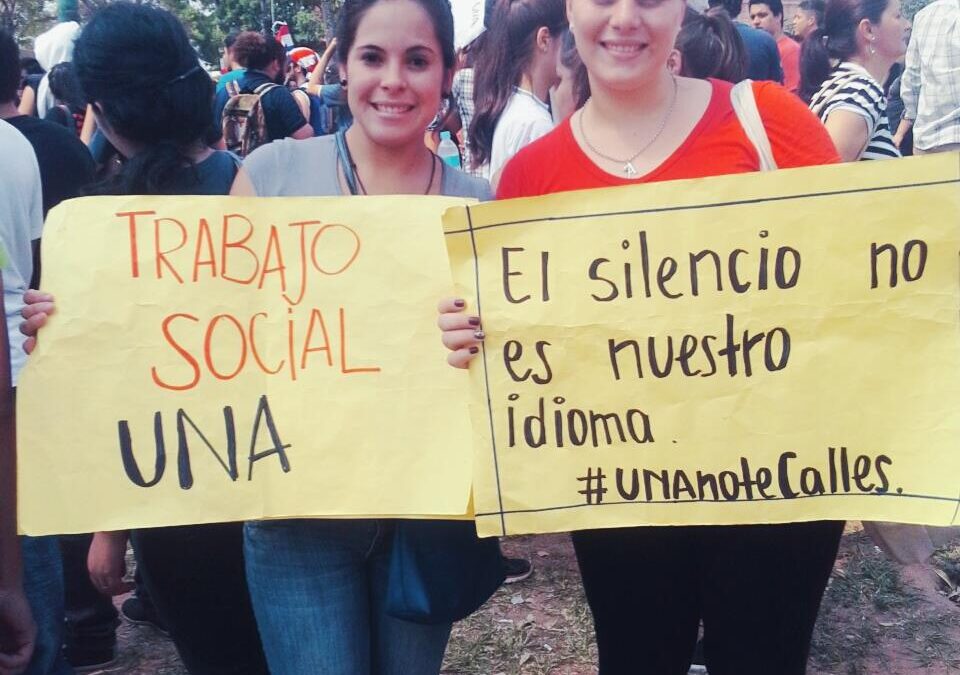
Paraguay: the long spring of the students
 Thousands of university students have denounced the rampaging corruption in the country’s main state university, the Università Nazionale of Asunción (UNA). A long austere spring ended with chain resignations of the academic authorities, and negotiations on the reforms of a statute drafted during the dictatorship. The university youth surprised everyone with their seriousness and organisation. In the month in which the campus was occupied, they created a true and proper “alternative State.” There were watch shifts at the doors, inspection of bags and car boots to prevent the introduction of alcoholic beverages, efficient orders for food and essential services, and oganisation of a supplementary school calendar, with the help of professors and graduating students. And now the schedule of exams has been adjusted so that no one would lose the semester. They furthermore demonstrated intelligence in not allowing themselves to be exploited by anybody. Their reference point and model was Pope Francis who had met thousands of young people in his visit to Paraguay. His appeal to “raise a din and then organise it,” was fully heeded. Among the leaders of the pacific revolt was #UNAnotecalles (“UNA speak up”), the youth of the Focolare. Alejandra and Cecilia, Medicine and Engineering students, respectively, said: “It all started with a sit-in before the Rector’s building, to demonstrate our indignation with regard to the latest reports of corruption. Every day there was a peaceful demonstration during which the mike was passed around to the students, professors and officers. Then came a permanent wake around the building, with a strike of the students to demand the resignation of the Rector and his assistants. The support of the people who provided food and other forms of aid, gave us the strength not to give up our battle, and made us see that it was a struggle for everyone’s good. After 40 days the Rector resigned along with five officers and another 38 were indicted, followed by the resignation of all the faculty deans. What was fundamental for us was to live this phase with all the Gen studying in the UNA university, and also with the others who expressed their support in various ways. Certain of Jesus’s promise to be among us if we unite in His name, we did our best to make it a reality. He was our guiding light in defending the evangelical values of love, truth and justice, and overcoming the many difficult moments. At times it was not easy to control the crowd that seemed to be overwhelmed by emotions. In those instants, when the right thing to do was not clear, we tried to decide together how to act and what decision to make.
Thousands of university students have denounced the rampaging corruption in the country’s main state university, the Università Nazionale of Asunción (UNA). A long austere spring ended with chain resignations of the academic authorities, and negotiations on the reforms of a statute drafted during the dictatorship. The university youth surprised everyone with their seriousness and organisation. In the month in which the campus was occupied, they created a true and proper “alternative State.” There were watch shifts at the doors, inspection of bags and car boots to prevent the introduction of alcoholic beverages, efficient orders for food and essential services, and oganisation of a supplementary school calendar, with the help of professors and graduating students. And now the schedule of exams has been adjusted so that no one would lose the semester. They furthermore demonstrated intelligence in not allowing themselves to be exploited by anybody. Their reference point and model was Pope Francis who had met thousands of young people in his visit to Paraguay. His appeal to “raise a din and then organise it,” was fully heeded. Among the leaders of the pacific revolt was #UNAnotecalles (“UNA speak up”), the youth of the Focolare. Alejandra and Cecilia, Medicine and Engineering students, respectively, said: “It all started with a sit-in before the Rector’s building, to demonstrate our indignation with regard to the latest reports of corruption. Every day there was a peaceful demonstration during which the mike was passed around to the students, professors and officers. Then came a permanent wake around the building, with a strike of the students to demand the resignation of the Rector and his assistants. The support of the people who provided food and other forms of aid, gave us the strength not to give up our battle, and made us see that it was a struggle for everyone’s good. After 40 days the Rector resigned along with five officers and another 38 were indicted, followed by the resignation of all the faculty deans. What was fundamental for us was to live this phase with all the Gen studying in the UNA university, and also with the others who expressed their support in various ways. Certain of Jesus’s promise to be among us if we unite in His name, we did our best to make it a reality. He was our guiding light in defending the evangelical values of love, truth and justice, and overcoming the many difficult moments. At times it was not easy to control the crowd that seemed to be overwhelmed by emotions. In those instants, when the right thing to do was not clear, we tried to decide together how to act and what decision to make.
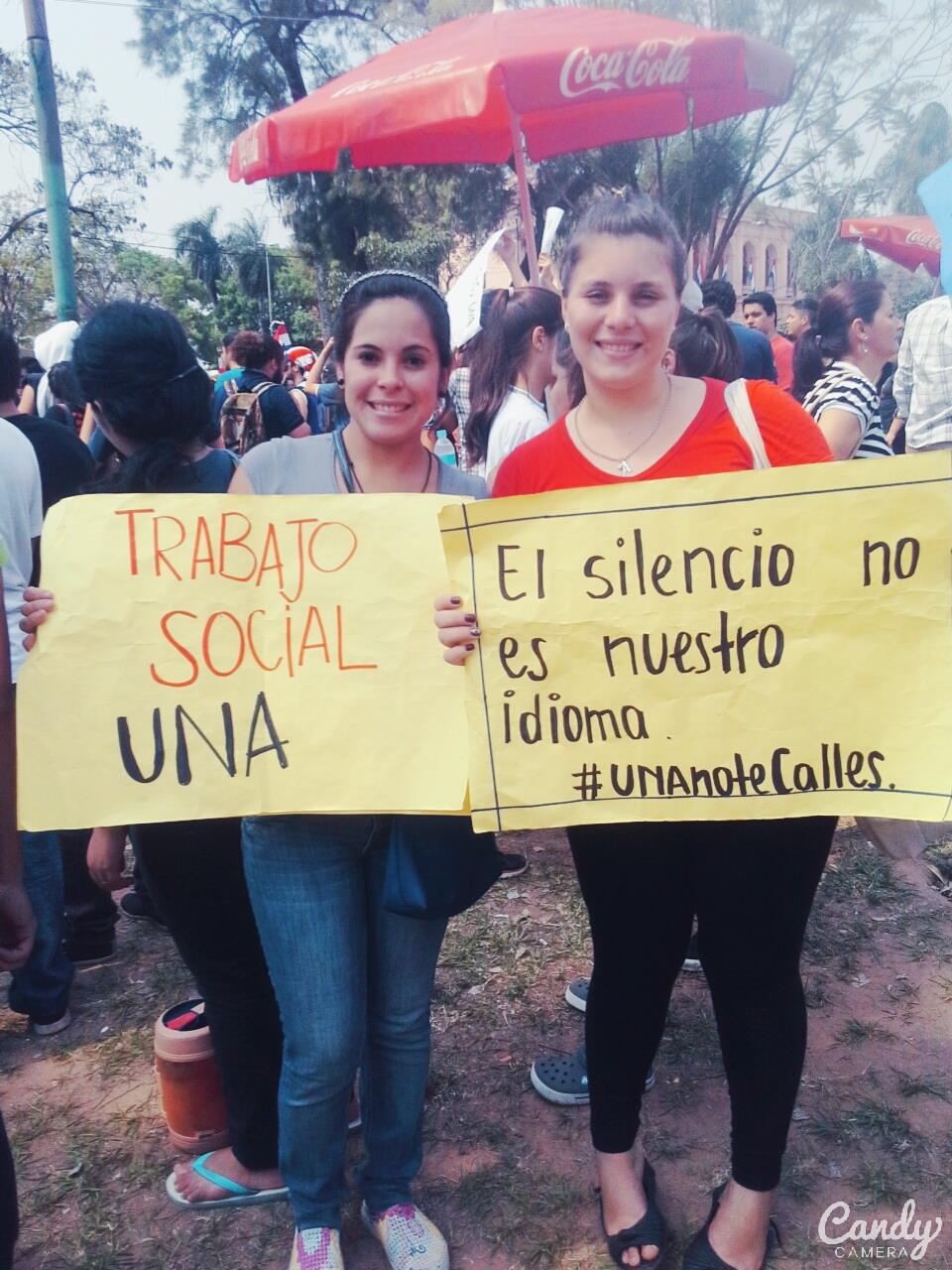
Leticia (left)
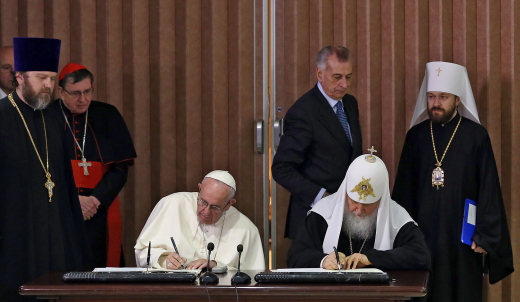
Francis and Kirill: Unity is reached by walking with one another
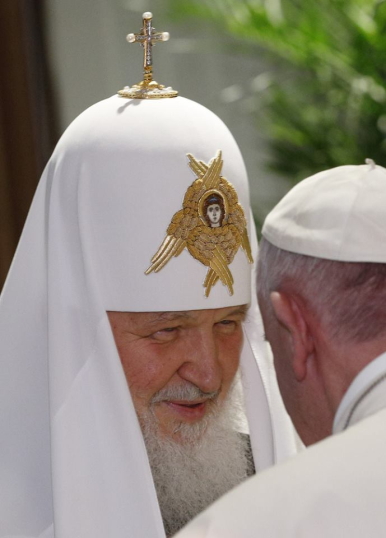 The Airport of Havana, Cuba, hosted the first meeting in history between the Bishop of Rome and the Patriarch of Moscow, on February 12, 2016. It was a fraternal encounter “between bishops’ that “gave an opportunity to listen and understand each other’s positions” said Patriarch Kirill at the conclusion of the meeting. Among the common concerns were the desire for peace and the defence of persecuted Christians around the world. “I felt the consolation of the Holy Spirit in this dialogue,” Pope Francis remarked, with the prospect of “a series of initiatives” to be carried forward together. “We are not competitors but brothers, and this concept must guide all our mutual actions as well as those directed to the outside world,” states the Joint Declaration that was signed by the Pope and the Patriarch. The declaration calls for common efforts between Roman Catholic and Orthodox Christians, and overcoming the historic divergences we have inherited, responding together to the challenges of today’s world. Christians are now victims of persecutions and violence in Syria, Iraq and other Middle East countries. Other challenges include the fight against terrorism, interreligious dialogue, European integration and respect for religious identities. The document also mentions social and ethical topics, with “pastoral” concern, as Pope Francis stressed while speaking with journalists on the flight between Cuba and Mexico: poverty, the breakdown of the family, the right to life (abortion, euthanasia and assisted reproduction), young people and peace in Ukraine. Much of the future of humanity will depend on our capacity to give shared witness to the Spirit of truth in these difficult times,” the document goes on to say.
The Airport of Havana, Cuba, hosted the first meeting in history between the Bishop of Rome and the Patriarch of Moscow, on February 12, 2016. It was a fraternal encounter “between bishops’ that “gave an opportunity to listen and understand each other’s positions” said Patriarch Kirill at the conclusion of the meeting. Among the common concerns were the desire for peace and the defence of persecuted Christians around the world. “I felt the consolation of the Holy Spirit in this dialogue,” Pope Francis remarked, with the prospect of “a series of initiatives” to be carried forward together. “We are not competitors but brothers, and this concept must guide all our mutual actions as well as those directed to the outside world,” states the Joint Declaration that was signed by the Pope and the Patriarch. The declaration calls for common efforts between Roman Catholic and Orthodox Christians, and overcoming the historic divergences we have inherited, responding together to the challenges of today’s world. Christians are now victims of persecutions and violence in Syria, Iraq and other Middle East countries. Other challenges include the fight against terrorism, interreligious dialogue, European integration and respect for religious identities. The document also mentions social and ethical topics, with “pastoral” concern, as Pope Francis stressed while speaking with journalists on the flight between Cuba and Mexico: poverty, the breakdown of the family, the right to life (abortion, euthanasia and assisted reproduction), young people and peace in Ukraine. Much of the future of humanity will depend on our capacity to give shared witness to the Spirit of truth in these difficult times,” the document goes on to say.  “Here in Moscow there is also the feeling that this was an important and historic meeting” writes focolarina Anna Gloria from the focolare in Moscow. The mass media are talking about it a lot. Bishop Paolo Pezzi invited everyone to the Cathedral of the Immaculate Conception to pray for unity. It was quite beautiful. There were Catholics and Orthodox from several movements and communities. Everyone feels that an important step towards unity has been taken.” Despite recent tensions between Moscow and Rome, the Russian Orthodox Church has a long history of seeking the reconciliation of the divided Christian churches. Father Hyacinthe Destivelle said so during an interview with the Vatican Radio. He is in charge of relations with the Slavic Orthodox Churches at the Pontifical Council for Christian Unity and was in Cuba for the meeting. Father Destivelle also explained that “the Russian Orthodox Church is fifth in the traditional order of authority among the 14 autocephalous Orthodox Churches. First position belongs to the Patriarchate of Constantinople, with a primacy of honour. It has a special relationship with the Holy See.” “The significance of the meeting between Pope Francis and Patriarch Kirill can also be seen in light of history with the Russian Orthodox Church,” where it “can act as a bridge between East and West.” Father Destivelle also gave other examples of how the Russian Orthodox Church was an active pioneer in ecumenical relations. It was the first Church to send observers during the Second Vatican Council. During their private meeting, Pope Francis and Patriarch Kirill also discussed the upcoming Pan-Orthodox Council scheduled for June 2016 in Crete. It will ”gather all the Orthodox churches for an Orthodox Synod,” Dr. Dimitrios Keramidas recently explained at an ecumenical school of the Focolare Movement, “this is not an event that is inserted into ecclesial life, but rather the official manifestation of the communional essence of the Church, the on-going and uninterrupted journey of the People of God.” It is a journey towards unity.
“Here in Moscow there is also the feeling that this was an important and historic meeting” writes focolarina Anna Gloria from the focolare in Moscow. The mass media are talking about it a lot. Bishop Paolo Pezzi invited everyone to the Cathedral of the Immaculate Conception to pray for unity. It was quite beautiful. There were Catholics and Orthodox from several movements and communities. Everyone feels that an important step towards unity has been taken.” Despite recent tensions between Moscow and Rome, the Russian Orthodox Church has a long history of seeking the reconciliation of the divided Christian churches. Father Hyacinthe Destivelle said so during an interview with the Vatican Radio. He is in charge of relations with the Slavic Orthodox Churches at the Pontifical Council for Christian Unity and was in Cuba for the meeting. Father Destivelle also explained that “the Russian Orthodox Church is fifth in the traditional order of authority among the 14 autocephalous Orthodox Churches. First position belongs to the Patriarchate of Constantinople, with a primacy of honour. It has a special relationship with the Holy See.” “The significance of the meeting between Pope Francis and Patriarch Kirill can also be seen in light of history with the Russian Orthodox Church,” where it “can act as a bridge between East and West.” Father Destivelle also gave other examples of how the Russian Orthodox Church was an active pioneer in ecumenical relations. It was the first Church to send observers during the Second Vatican Council. During their private meeting, Pope Francis and Patriarch Kirill also discussed the upcoming Pan-Orthodox Council scheduled for June 2016 in Crete. It will ”gather all the Orthodox churches for an Orthodox Synod,” Dr. Dimitrios Keramidas recently explained at an ecumenical school of the Focolare Movement, “this is not an event that is inserted into ecclesial life, but rather the official manifestation of the communional essence of the Church, the on-going and uninterrupted journey of the People of God.” It is a journey towards unity.
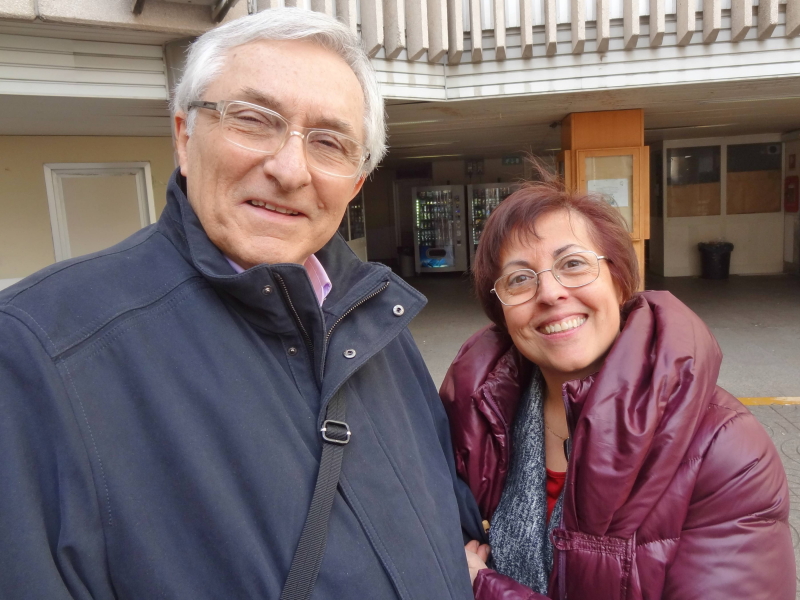
Sickness: a limitation transformed into richness
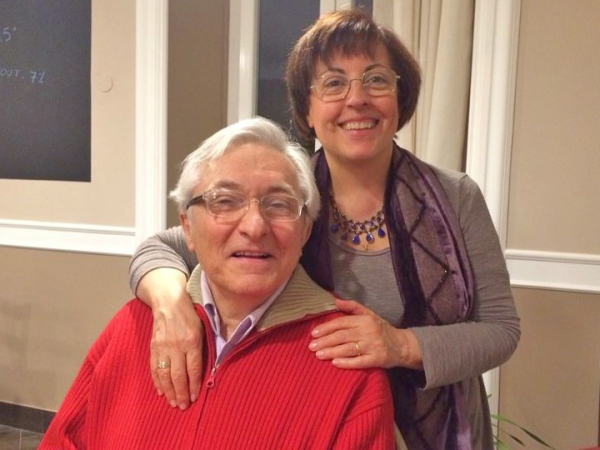 “When I left my home for the bank I was working at 21 years ago, I certainly wasn’t thinking that I wouldn’t return home that night. A strong headache forced my colleagues to take me to hospital. I was 49 years old with a well-established professional career, an upcoming promotion, a beautiful family with three daughters between 14 and 18. Suddenly and unexpectedly I found myself in a wheelchair that I was unable to control because, along with the use of my legs, I had also lost the use of my arms. I had been turned into nothing: I needed help eating, bathing and dressing. . . I was totally dependent on others. I was feeling desperate and anxious, feelings that I tried to reject because I knew they weren’t the solution. From when I embraced the spirituality of the Focolare, I have learned to be totally disposed to God’s will, and even though I didn’t understand the reason for this nightmare, my wife and I wanted to believe that it too was God’s love for me, for us. My daughters also shared in our decision and, right from the first days I found strength and patience that I never dreamed of finding. In a few months I regained the use of my legs and, with great effort and the support of a colleague who accompanied me was able to go back to work for another 7 years. Then I just couldn’t do it anymore.”
“When I left my home for the bank I was working at 21 years ago, I certainly wasn’t thinking that I wouldn’t return home that night. A strong headache forced my colleagues to take me to hospital. I was 49 years old with a well-established professional career, an upcoming promotion, a beautiful family with three daughters between 14 and 18. Suddenly and unexpectedly I found myself in a wheelchair that I was unable to control because, along with the use of my legs, I had also lost the use of my arms. I had been turned into nothing: I needed help eating, bathing and dressing. . . I was totally dependent on others. I was feeling desperate and anxious, feelings that I tried to reject because I knew they weren’t the solution. From when I embraced the spirituality of the Focolare, I have learned to be totally disposed to God’s will, and even though I didn’t understand the reason for this nightmare, my wife and I wanted to believe that it too was God’s love for me, for us. My daughters also shared in our decision and, right from the first days I found strength and patience that I never dreamed of finding. In a few months I regained the use of my legs and, with great effort and the support of a colleague who accompanied me was able to go back to work for another 7 years. Then I just couldn’t do it anymore.” 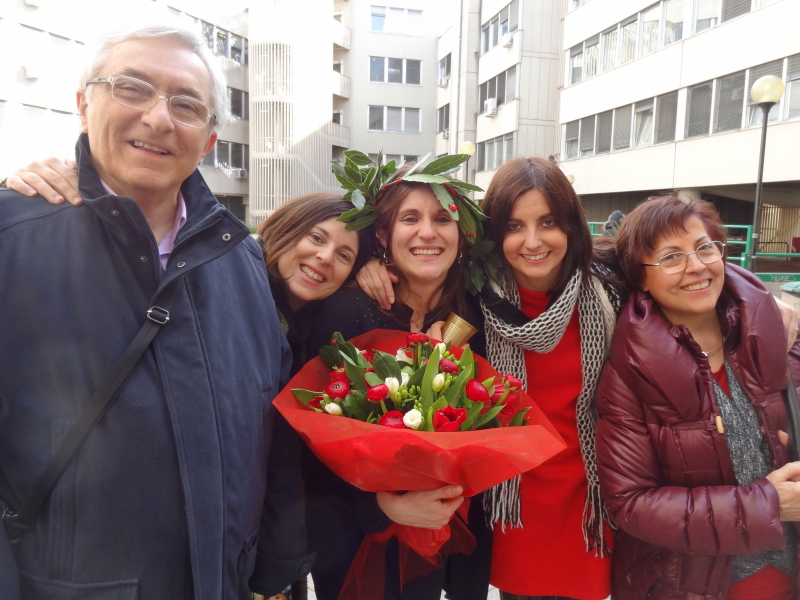 Already then, I wasn’t able to walk because of my handicap, if not just for short distances. I could no longer drive the car, take a shower alone, button my clothing, cut the food on my plate, turn on the coffee machine or embrace my wife and children. I couldn’t do any of those things that required the use of two hands. At times the fear was even bitterer. Fear of not being able go on living as a couple, fear of the solitude, of my fragility in the face of different situations, fear of the doubt about whether I would be able to continue in my role as father, and so on. Now, with much effort I continue with physiotherapy, even though I know that healing isn’t on the landscape. At least it slows the process of debilitation. During these 21 years God has never failed to accompany me with refined faithfulness, delicateness and tenderness that only He knows how to give. Pina and I have learned to let ourselves me carried by Him, to let ourselves be surprised by His Love. And when everything seemed to crumble, or became unstable, deep in our heart we understood that this partaking – in some way – in the mystery of Jesus on the Cross, was a privilege for us. Like Him, we try to overcome the pain by loving everyone around us, experiencing what could be called a ‘divine alchemy’ wherein suffering is like a talent to be turned into love.
Already then, I wasn’t able to walk because of my handicap, if not just for short distances. I could no longer drive the car, take a shower alone, button my clothing, cut the food on my plate, turn on the coffee machine or embrace my wife and children. I couldn’t do any of those things that required the use of two hands. At times the fear was even bitterer. Fear of not being able go on living as a couple, fear of the solitude, of my fragility in the face of different situations, fear of the doubt about whether I would be able to continue in my role as father, and so on. Now, with much effort I continue with physiotherapy, even though I know that healing isn’t on the landscape. At least it slows the process of debilitation. During these 21 years God has never failed to accompany me with refined faithfulness, delicateness and tenderness that only He knows how to give. Pina and I have learned to let ourselves me carried by Him, to let ourselves be surprised by His Love. And when everything seemed to crumble, or became unstable, deep in our heart we understood that this partaking – in some way – in the mystery of Jesus on the Cross, was a privilege for us. Like Him, we try to overcome the pain by loving everyone around us, experiencing what could be called a ‘divine alchemy’ wherein suffering is like a talent to be turned into love.  God took me/us by the hand and, little by little revealing his plan for us, led us into deep intimacy with Him among us, making us understand the mystery of suffering – in the light. And what could be considered a limit has been transformed into richness, what could have stopped us has been turned into a race. Not even an invasive handicap can take away the possibility of being a tool in God’s hands for our neighbor.” Giulio Ciarrocchi
God took me/us by the hand and, little by little revealing his plan for us, led us into deep intimacy with Him among us, making us understand the mystery of suffering – in the light. And what could be considered a limit has been transformed into richness, what could have stopped us has been turned into a race. Not even an invasive handicap can take away the possibility of being a tool in God’s hands for our neighbor.” Giulio Ciarrocchi

I’ll love you forever
 “How will we celebrate St. Valentines? We don’t know yet. Any occasion is fine for surprising the other with something nice, hiding last-minute gifts.” Iris is a 26 year-old Brazilian. She is in Italy on an international cooperative project. She is engaged to Antonello, an Economics graduate, waiting for a job that is more in tune with his academic background. He works shifts at a call centre. When they first met, Iris was a bit reluctant about beginning a new relationship, because she had been previously disappointed by love. But Antonello managed to get her cell phone number and with his fantastic text messages, finally convinced her to give it another try. “The more we met, the more I realised I was in love,” Iris admits, “and we began to make plans.” “What kind of plans?” we asked. “First of all,” says Antonello, “I wanted to introduce her to my parents. Then we travelled to Brazil to meet her parents. Meanwhile, we were discovering each other’s cultures and different religious beliefs. Iris is deeply Catholic. I have a more humanistic view of things. But even if we come from different paths, we’re both convinced of the beauty of marriage, and that it is a profoundly human and sacred act.” Iris recounts: “That exchange – which for me, accustomed to certainties that were too often taken for granted – wasn’t easy. But it helped us to realise how strong our love was, a love that made us grow as human beings: I became more of a woman, and Antonello more of a man. It also led us to our decision that we would get married when we were financially independent.” Their certainty is disarming, considering the many couples around them whose relationships have failed, whose great love has vanished into thin air. Just the same, they want to take the big step into marriage because – as they say – “We’re sure of our love. It’s not merely a romantic dinner or a chocolate Valentine heart. “Love,” Iris explains, “is falling in love with the other’s soul. It’s knowing how to put aside one’s own thinking, to make room for the other’s thinking, and to show that for you, he matters more for what he is than for what you would like him to be.”
“How will we celebrate St. Valentines? We don’t know yet. Any occasion is fine for surprising the other with something nice, hiding last-minute gifts.” Iris is a 26 year-old Brazilian. She is in Italy on an international cooperative project. She is engaged to Antonello, an Economics graduate, waiting for a job that is more in tune with his academic background. He works shifts at a call centre. When they first met, Iris was a bit reluctant about beginning a new relationship, because she had been previously disappointed by love. But Antonello managed to get her cell phone number and with his fantastic text messages, finally convinced her to give it another try. “The more we met, the more I realised I was in love,” Iris admits, “and we began to make plans.” “What kind of plans?” we asked. “First of all,” says Antonello, “I wanted to introduce her to my parents. Then we travelled to Brazil to meet her parents. Meanwhile, we were discovering each other’s cultures and different religious beliefs. Iris is deeply Catholic. I have a more humanistic view of things. But even if we come from different paths, we’re both convinced of the beauty of marriage, and that it is a profoundly human and sacred act.” Iris recounts: “That exchange – which for me, accustomed to certainties that were too often taken for granted – wasn’t easy. But it helped us to realise how strong our love was, a love that made us grow as human beings: I became more of a woman, and Antonello more of a man. It also led us to our decision that we would get married when we were financially independent.” Their certainty is disarming, considering the many couples around them whose relationships have failed, whose great love has vanished into thin air. Just the same, they want to take the big step into marriage because – as they say – “We’re sure of our love. It’s not merely a romantic dinner or a chocolate Valentine heart. “Love,” Iris explains, “is falling in love with the other’s soul. It’s knowing how to put aside one’s own thinking, to make room for the other’s thinking, and to show that for you, he matters more for what he is than for what you would like him to be.”  Everything seems easy when you’re falling in love, but like all the other the seasons of life, it too fades away. The experts say that it lasts for a year or so; then you find yourself back on the ground. “We know it’s not always going to be this passionate,” says Antonello, “that there will be dark moments. . . In fact, we enrolled in a course for engaged couples, so that we can share our experience with other people like us. I know that we’ll also talk about the difficulties there will be, about the crisis that will come. And they’ve already told us that they’ll explain to us how to overcome that: by seeing each other new every day, and always beginning again. Regarding beginning again . . . that’s another opportunity that every couple needs, along with ongoing dialogue, seeing happiness not as a personal right, but as something to be given, healthy detachment from one’s original family, communicating with other couples, the ability to forgive, gratuitousness and tenderness . . . These are some of the topics that will be covered, including sexuality and procreation that are commonly presented in courses for engaged couples. It will be the same for this one organised by the Focolare Movement’s New Families, which will take place on April 8-10, 2016 in Loppiano, Italy. Besides, these courses are required for couples who plan to marry in the Catholic Church. So, why not take advantage of them?” For more information
Everything seems easy when you’re falling in love, but like all the other the seasons of life, it too fades away. The experts say that it lasts for a year or so; then you find yourself back on the ground. “We know it’s not always going to be this passionate,” says Antonello, “that there will be dark moments. . . In fact, we enrolled in a course for engaged couples, so that we can share our experience with other people like us. I know that we’ll also talk about the difficulties there will be, about the crisis that will come. And they’ve already told us that they’ll explain to us how to overcome that: by seeing each other new every day, and always beginning again. Regarding beginning again . . . that’s another opportunity that every couple needs, along with ongoing dialogue, seeing happiness not as a personal right, but as something to be given, healthy detachment from one’s original family, communicating with other couples, the ability to forgive, gratuitousness and tenderness . . . These are some of the topics that will be covered, including sexuality and procreation that are commonly presented in courses for engaged couples. It will be the same for this one organised by the Focolare Movement’s New Families, which will take place on April 8-10, 2016 in Loppiano, Italy. Besides, these courses are required for couples who plan to marry in the Catholic Church. So, why not take advantage of them?” For more information
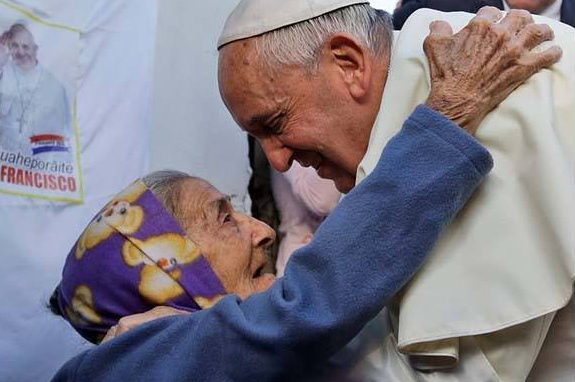
Giordani: The Gospel is not a collection of words
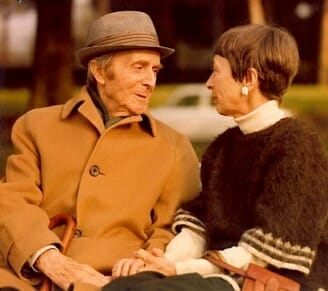 “The Gospel isn’t just a collection of words. It’s also a list of facts. It’s life. Jesus not only preached, he healed the sick, comforted the afflicted, raised the dead and fed the hungry. He performed the Works of Mercy because He loved. “I have compassion for these people,” He exclaimed upon seeing the hungry throngs, and He multiplied bread to satisfy their hunger. Bread takes on a sacred value in the Redemption. Jesus inserts the greatest mystery into bread, and He made the Eucharistic Banquet the core of the life of the Church community, forever uniting body and spirit, just as He had united humanity and divinity in Himself. Therefore, you love God, the Father, when you feed the hungry. All those who can offer nourishment to the undernourished and hungry and don’t do so, are murderers according to the Fathers of the Church; indeed, they’re god-killers. They cause Christ to die. From the perspective of the Gospel all those who, during the war years, forced condemned prisoners to starve to death, repeated the crucifixion. It was like murdering God. The hordes of the deported – in snow or under blazing sun, in armored cars, or in isolated ships whose monotony was only interrupted by the falling of the hungry – crossed the line of practical atheism even when it was perpetrated in the name of God. That is why Saint Vincent de Paul went aboard the galleys of very Christian kings, where the galley slaves were dropping dead from exhaustion. A Work of Mercy is not the mere distribution of food or money. It reconstitutes justice. “The Works of Mercy accomplish nothing without love,” Saint Augustine says. “If I give everything I own to the poor and even go to the stake to be burned as a martyr, but I don’t love, I’ve gotten nowhere” (1 Cor 13:3), Saint Paul says to those Christians who shared the Bread of Angels but not that of men. The cold and reserved woman who gives Christmas to the poor but never opens her soul to them, performs nothing more than a bureaucratic duty: Christ is not pleased. Social welfare does little or nothing at all to produce the effects of a religious life, if those who carry it out don’t bring that divine nourishment of the Holy Spirit, which is love.
“The Gospel isn’t just a collection of words. It’s also a list of facts. It’s life. Jesus not only preached, he healed the sick, comforted the afflicted, raised the dead and fed the hungry. He performed the Works of Mercy because He loved. “I have compassion for these people,” He exclaimed upon seeing the hungry throngs, and He multiplied bread to satisfy their hunger. Bread takes on a sacred value in the Redemption. Jesus inserts the greatest mystery into bread, and He made the Eucharistic Banquet the core of the life of the Church community, forever uniting body and spirit, just as He had united humanity and divinity in Himself. Therefore, you love God, the Father, when you feed the hungry. All those who can offer nourishment to the undernourished and hungry and don’t do so, are murderers according to the Fathers of the Church; indeed, they’re god-killers. They cause Christ to die. From the perspective of the Gospel all those who, during the war years, forced condemned prisoners to starve to death, repeated the crucifixion. It was like murdering God. The hordes of the deported – in snow or under blazing sun, in armored cars, or in isolated ships whose monotony was only interrupted by the falling of the hungry – crossed the line of practical atheism even when it was perpetrated in the name of God. That is why Saint Vincent de Paul went aboard the galleys of very Christian kings, where the galley slaves were dropping dead from exhaustion. A Work of Mercy is not the mere distribution of food or money. It reconstitutes justice. “The Works of Mercy accomplish nothing without love,” Saint Augustine says. “If I give everything I own to the poor and even go to the stake to be burned as a martyr, but I don’t love, I’ve gotten nowhere” (1 Cor 13:3), Saint Paul says to those Christians who shared the Bread of Angels but not that of men. The cold and reserved woman who gives Christmas to the poor but never opens her soul to them, performs nothing more than a bureaucratic duty: Christ is not pleased. Social welfare does little or nothing at all to produce the effects of a religious life, if those who carry it out don’t bring that divine nourishment of the Holy Spirit, which is love.  No one is moved by or grateful to the faucet for the water it provides, or by the light bulb for the light it provides, Ozanam remarks. “Man does not live on bread alone,” because he is soul as well as stomach. A Work of Mercy is a moral and material duty. By feeding the hungry, I feed me because his hunger is both mine and that of the whole social body of which I am an organic part. You can’t dump grain into the ocean when in another part of the world there is someone dying of hunger. “We, though many, are one body throughout the world:” and you cannot injure one body part to the advantage of another. If you do, you’ll pay for it with revolutions, disorder and all the epidemics that are found on this side of Heaven, and with hell on the other side. It has been said that the earth is dying, that the world’s resources are diminishing and the wars increasing precisely because of hunger. Some would like to solve the problem with war and birth control, doing away with human life. But it’s not resources that are lacking; what’s lacking is love – and the intelligence – for making it circulate. Circulation is life. The stagnation brought about by accumulation is a source of hate, revolution and war. It’s death. “If your enemy is hungry, feed him, if he is thirsty, give him something to drink. In doing this, you will heap burning coals on his head” (Rm 12:20). The Works of Mercy perform the miracle of making the love circulate by making the bread circulate. It’s a miracle that transforms bread into a sort of social sacrament, in which you begin from love, God, and you nourish the body along with the soul. (From:Igino Giordani, Il fratello (Rome: Città Nuova, 2011) p.63-67.
No one is moved by or grateful to the faucet for the water it provides, or by the light bulb for the light it provides, Ozanam remarks. “Man does not live on bread alone,” because he is soul as well as stomach. A Work of Mercy is a moral and material duty. By feeding the hungry, I feed me because his hunger is both mine and that of the whole social body of which I am an organic part. You can’t dump grain into the ocean when in another part of the world there is someone dying of hunger. “We, though many, are one body throughout the world:” and you cannot injure one body part to the advantage of another. If you do, you’ll pay for it with revolutions, disorder and all the epidemics that are found on this side of Heaven, and with hell on the other side. It has been said that the earth is dying, that the world’s resources are diminishing and the wars increasing precisely because of hunger. Some would like to solve the problem with war and birth control, doing away with human life. But it’s not resources that are lacking; what’s lacking is love – and the intelligence – for making it circulate. Circulation is life. The stagnation brought about by accumulation is a source of hate, revolution and war. It’s death. “If your enemy is hungry, feed him, if he is thirsty, give him something to drink. In doing this, you will heap burning coals on his head” (Rm 12:20). The Works of Mercy perform the miracle of making the love circulate by making the bread circulate. It’s a miracle that transforms bread into a sort of social sacrament, in which you begin from love, God, and you nourish the body along with the soul. (From:Igino Giordani, Il fratello (Rome: Città Nuova, 2011) p.63-67.
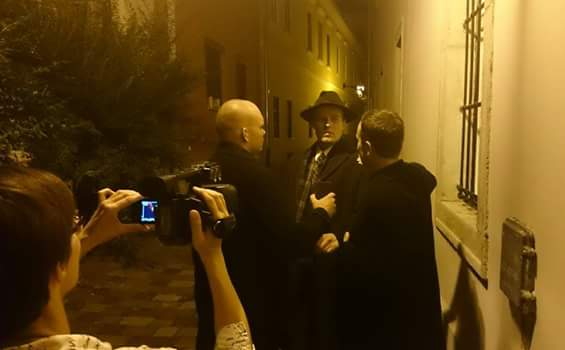
“Border Men”: Premier screening in the Philippines
Border Men will be shown for the first time in the Philippines on February 20, 2016, marking the 50th anniversary of the arrival of the Focolare Movement in Asia. Cengia (Guido Mirti), one of the film’s main characters, arrived in the Philippines in 1966 to help spread the spirituality of unity on the Asian continent. Border Men is the story of two people and their message of brotherhood, who step beyond the solidly guarded borders that had been established by the Cold War. But it is also the story of the cry of pain of countless persecuted Christians in many Eastern European countries. Finally, it is the story of spirituality – that of the Focolare Movement – which was given by God for the atheistic world as well. One of the story’s main protagonists is Guido Mirti, an Italian focolarino more commonly known as Cengia. From 1955 to 1966 (the year of his imprisonment in Prague and subsequent expulsion from the country) he was officially working as a tradesman, travelling to Czchekoslovakia, Hungary and East Germany and forming friendships with Catholic leaders who were being persecuted by the Communist Regime. The documentary will be ready in Italian, German, Slovak and Hungarian by March 2016. It is supported by funding from the European Youth in Action Project, the New Humanity NGO, the Renovabis Foundation and Aid to the Church in Need. “The idea of doing this documentary,” film director Cinzia Panero points out, “stemmed from a desire to publicise a fascinating and original part of the Focolare story and its contribution to the historical processes behind the Iron Curtain. It is part of the project “Bridges in Europe: past and future” that has now produced three documentaries: “Medici della DDR” (The Doctors of East Germany), “YOLO” about the story of Cardinal Miloslav Vlk, and the present film about Cengia. The goal was to offer the new generations an alternative key for understanding: the Gospel message of mutual love applied to all social and historical contexts with amazing results.” “While writing and then running the scenes,” says the director, “I also got to experience the power of that Love that opened the hearts of many people and institutions to give generously. The thank you list is quite long and will be well documented in the credits at the end of the film. Here, I would only like to mention the 50 actors – both professional and non – who were willing to wear heavy coats, scarves and winter clothing in the sweltering summer heat. Or the absolute availability and careful attention of Swing City Hotel in setting up a camera. We can never forget the costume designers who created and sewed the uniforms of 5 prisoners. But also the 70 people who contributed funds for the filming, equipment, advice and hearty awareness that they were involved in a project that was highlighting values such as giving, loyalty and making brave decisions. Border Men is a message for all of us: to be people of dialogue no matter where we are. Maria Chiara De Lorenzo See the Official English Trailer: https://www.youtube.com/watch?v=xq0TJEDaEg8 See webside: border.men.info@gmail.com
“While writing and then running the scenes,” says the director, “I also got to experience the power of that Love that opened the hearts of many people and institutions to give generously. The thank you list is quite long and will be well documented in the credits at the end of the film. Here, I would only like to mention the 50 actors – both professional and non – who were willing to wear heavy coats, scarves and winter clothing in the sweltering summer heat. Or the absolute availability and careful attention of Swing City Hotel in setting up a camera. We can never forget the costume designers who created and sewed the uniforms of 5 prisoners. But also the 70 people who contributed funds for the filming, equipment, advice and hearty awareness that they were involved in a project that was highlighting values such as giving, loyalty and making brave decisions. Border Men is a message for all of us: to be people of dialogue no matter where we are. Maria Chiara De Lorenzo See the Official English Trailer: https://www.youtube.com/watch?v=xq0TJEDaEg8 See webside: border.men.info@gmail.com
OnCity: Network of lights to inhabit the planet
“OnCity: Networks of light to inhabit the planet” is the title of a workshop on international citizenship that will take place on April 1-3, 2016 at Castel Gandolfo Conference Centre, Italy. The conference is organised by the New Humanity Movement, Youth for a United World and the United World Project which are all agencies of the Focolare Movement that are engaged in promoting brotherhood among generations, individuals, groups and peoples. We are challenged by current events: bombings, terrorism, new forms of poverty and marginalisation and a piecemeal world war. Cities are in trouble, suffering from contradictions that everyone can see. But there are also positive experiences which show that it is possible to work, believe and hope for more liveable and fraternal cities. The three-day workshop will examine changes taking place in today’s cities and present a lifestyle of dialogue. For information and reservations: oncity2016.net info@oncity2016.net 06/94792170 Download brochure: pdf ONCITY2016- reti di luci per abitare il pianeta (14.05 MB)

